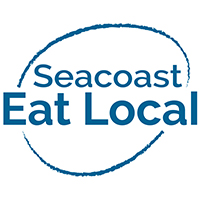This past Saturday at the Exeter Farmers’ Market located in Exeter High School, the pierogi being sold by Jaju stood out. Believe it or not, locally produced pierogi are rare if nonexistent in Seacoast New Hampshire, a google search even shows that not many local restaurants offer them on their menu. Jaju, out of Lynn, Massachusetts is the closest producer of them and offer a variety of fillings (vegan pierogi can even be special ordered according to their website), you can purchase them from these local stores. I was extremely interested in the varieties offered by Jaju and decided to purchase the sweet potato and caramelized onion variety, yum!
That led me on a search to learn more about them, their origin, and how they are made. Pierogi are a thinly rolled dough dumpling (similar to a ravioli or gyoza) and can be filled with a variety of fillings. Pierogi can be filled with savory foods like meats, potatoes, caramelized onions, cheese or even sweet foods like berries for a tasty dessert. The only variety I have ever tried are the common frozen potato, cheese, and onion variety that come to many people’s minds when the word pierogi is spoken. The common potato and cheese pierogi that many people are familiar with are actually referred to as “ruskie” pierogi.
Pierogi are one of the national foods of Poland and the word pierogi is Slavic for the word festival. It’s actually incorrect to call them “pierogies,” because the word pierogi is already plural. The tasty dumplings first popped up in Poland around the 13th century however, recipes didn’t start to appear in literature until the 17th century. Polish immigrants first brought pierogi to the United States over 100 years ago. The largest pierogi ever created was 92 pounds, and there is a Guinness Book record for making pierogi (in 100 minutes, 1663 dumplings were created)! Pierogi also spelled pyrogy are so popular in Canada, there is even a statue located in Glendon, Alberta dedicated to the dumpling!
Nutritionally, the pierogi varies depending on the filling, but the majority of the pierogi is carbohydrate. To be honest, most people are not eating pierogi because of their health benefits, mostly because of their flavor. Pierogi can be part of a balanced diet. When preparing the dumplings they can be pan fried or boiled depending on your preference and the filling. I pan fried the sweet potato and caramelized onion pierogi in a garlic butter sauce and served with shrimp and they were extremely tasty. Pan frying gives a nice airy, yet crispy texture to the dough which is a treat to bite into. It can be both difficult and time consuming to make these delicious treats from scratch if you are not experienced in the kitchen, but here is a recipe for homemade pierogi if you want to give it a try.

